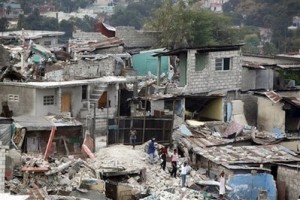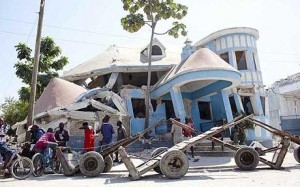Chile was ready for quake, Haiti wasn't
PHI BETA IOTA EMPHASIS: On Port-au-Prince's streets Saturday, many people had not heard of Chile's quake. More than half a million are homeless, most still lack electricity and are preoccupied about trying to get enough to eat.

PORT-AU-PRINCE, Haiti – The earthquake in Chile was far stronger than the one that struck Haiti last month — yet the death toll in this Caribbean nation is magnitudes higher.
The reasons are simple.
Chile is wealthier and infinitely better prepared, with strict building codes, robust emergency response and a long history of handling seismic catastrophes. No living Haitian had experienced a quake at home when the Jan. 12 disaster crumbled their poorly constructed buildings.
. . . . . . .
Sinclair said he has architect colleagues in Chile who have built thousands of low-income housing structures to be earthquake resistant.
In Haiti, by contrast, there is no building code.

With a population of as many as three million, Port-au-Prince was a vibrant city, its streets choked with buses and motorcycles. Today you see the legacy of the disaster everywhere: surgeons in scrubs walk the streets; dust suffuses everything, irritating the nasal passages and lungs; surfaces are cracked and fractured – nothing seems fixed or hard; government papers from the national archive blow across the street. The decorative pink stone of the Roman Catholic cathedral, built nearly a century ago, is now a scene of utter devastation. Even those buildings that are still standing (up to 50 per cent of the city was destroyed) are at oblique angles, intersecting with a disorientating effect.
Port-au-Prince seems not like a city at all now, but a waking nightmare where even the most ordinary morning walk can turn distinctly lurid. There is a car in one of the streets behind the national palace that has been flattened by falling masonry. The driver’s body is still at the wheel.
Haiti Rolling Directory from 12 January 2010



